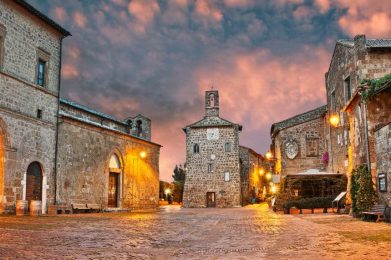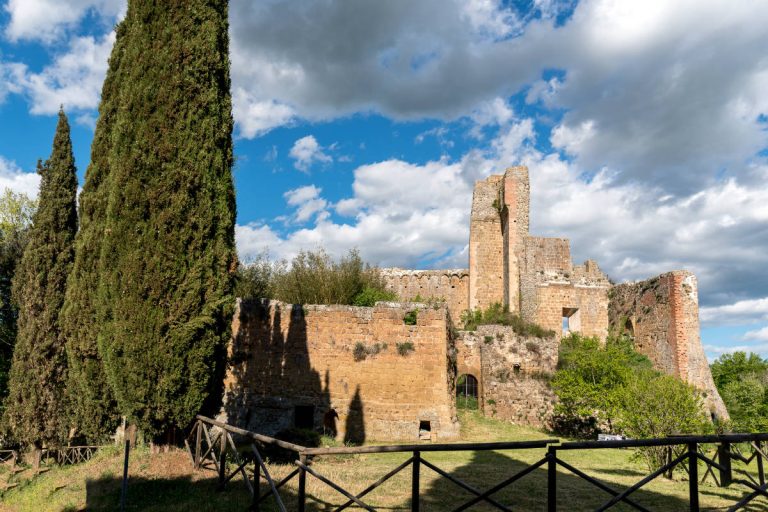The Aldobrandesque Fortress of Sovana was built on pre-existing structures from Etruscan times around the year 1000, in Tuscany. It was the seat and symbol of power of the Aldobrandeschi family, who controlled it until the end of the 13th century. During the Aldobrandeschi rule, the fortification was incorporated into the County of Sovana, following the division of all the family’s possessions. In 1293, Sovana and its fortress became part of the Orsini County of Pitigliano, following the marriage between Romano Orsini and Anastasia Aldobrandeschi. However, during this historical period, there was a phase of degradation due to the shift of the capital to Pitigliano. In the early 15th century, Sovana was conquered by the Sienese, thus becoming part of the Republic of Siena. It was during this period that the fortification was restored after having been completely abandoned for more than a century. In the second half of the 16th century, Sovana and its fortress became part of the Grand Duchy of Tuscany, following its fate. Cosimo I de’ Medici had some restoration work carried out, which, however, did not prevent the subsequent abandonment and degradation of the structure.
The Aldobrandesque Fortress of Sovana is located just outside the eastern part of the historic centre, resting on a small tuff spur that levels the base surface. At present, it takes the form of imposing ruins, clad in tuff and preserved in fairly good condition. Access is through a round-arched door that opens on the side facing the historic centre. The curtain walls rest on some sections of the primitive Etruscan ‘Mura di Sovana’ and have, in some places, crowning at the top with blind arches resting on corbels; the tower, which is only preserved on two sides, also has a very similar crowning at the top, with corbels that are, however, much more prominent, suggesting the presence of battlements in past eras.


